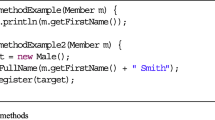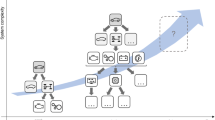Abstract
Analysis and simulation of complex systems are facilitated by the availability of appropriate modeling formalisms and tools. In many cases, no single analysis and modeling method can successfully cope with all aspects of a complex system: a multi-formalism multi-solution approach is very appealing, since it offers the possibility of applying the most suitable formalisms and solution techniques to model and analyze different components or aspects of a system. Another important feature that a successfull modeling approach should include is the possibility of reusing (sub)models: by composing parameterized submodels and then instantiating the parameters, complete models of different scenarios can be obtained and analyzed.
This paper introduces an innovative approach to multi-formalism modeling of systems that is part of the OsMoSys (Object-based multi-formaliSm MOdeling of SYStems) framework. OsMoSys uses the proposed modeling approach to build multi-formalism models, and workflow management to achieve multi-solution. Our modeling approach is based on meta-modeling, allowing to easily define and integrate different formalisms, and on some concepts from object orientation. Its main objectives are the interoperability of different formalisms and the definition of mechanisms to guarantee the flexibility and the scalability of the modeling framework.
Similar content being viewed by others
References
Bernardo M, Donatiello L, Ciancarini P (2002) Stochastic Process Algebra: From an Algebraic Formalism to an Architectural Description Language. In: Calzarossa MC, Tucci S (eds): Performance 2002, Tutorial Lectures, LNCS 2459, Springer-Verlag, pp 236–260
Bause F, Buchholz P, Kemper P (1998) A Toolbox for Functional and Quantitative Analysis of DEDS. In: Pujanger R, Savino NN, Serra B (eds): Quantitative Evaluation of Computing and Communication Systems, LNCS 1469. Springer-Verlag, pp 356–359
Ciardo G, Jones RL, Miner AS, Siminiceanu R (2001) SMART: Stochastic Model Analyzer for Reliability and Timing. Tools Presentation, Proc. of the Int. Multiconference on Measurement, Modelling and Evaluation of Computer-Communication Systems, Aachen, Germany, September 2001, pp 29–34
Clarke EM, Wing JM (1996) Formal Methods: State of the Art and Future Directions. ACM Computing Surveys, 28(4): 626–643
Clark G, Courtney T, Daly D, Deavours D, Derisavi S, Doyle J, Sanders W, Webster P (2001) The Möbius modeling tool. Proc. 9th Int. Workshop on Petri Nets and Performance Models (PNPM’01), Aachen, Germany, September 2001, pp 241–250
Deavours D (2001) Formal Specification of the Möbius modeling framework. PhD. Thesis for the degree of Doctor of Philosophy in Electrical Engineering, University of Illinois, Urbana-Champaign, USA
Deavours DD, Clark G, Courtney T, Daly D, Derisavi S, Doyle JM, Sanders WH, Webster PG (2002) The Möbius Framework and its Implementation. IEEE Transactions on Software Engineering, 28(10): 956–969
Gribaudo M, Iacono M, Mazzocca N, Vittorini V (2003) The OsMoSys/DrawNET Xe! Languages System: A novel Infrastructure for Multi-Formalism Object-Oriented Modelling. Proc. of the 15th European Simulation Symposium and Exhibition (ESS2003), SCS press, Oct. 2003, Delft, The Netherlands, pp 165–174
de Lara J, Vangheluwe HL (2002) AToM3: A Tool for Multi-Formalism and Meta-Modelling. Proc. of the European Joint Conference on Theory And Practice of Software (ETAPS), Fundamental Approaches to Software Engineering (FASE), April 2002. Grenoble, France. LNCS 2306, Springer-Verlag, pp 174–188
de Lara J, Vangheluwe HL (2002) Computer Aided Multi-Paradigm Modelling to Process Petri-Nets and Statecharts. Proc. of the 1st International Conference on Graph Transformations (ICGT’2002), Barcelona, October 2002, LNCS 2505, Springer Verlag, pp 239–253
Dijkstra E (1979) Programming Considered as a Human Activity. Classics in Software Engineering, Yourdon Press, New York, NY
Engstrom E, Krueger J (2000) Building and Rapidly Evolving Domain-Specific Tools with DOME. Proc. IEEE International Symposium on Computer-Aided Control Systems Design (CACSD 2000), Alaska, USA, pp 83–88
Franceschinis G, Gribaudo M, Iacono M, Mazzocca N, Vittorini V (2002) DrawNET++: Model Objects to Support Performance Analysis and Simulation of Complex Systems. Proc. 12th Int. Conference on Modelling Tools and Techniques for Computer and Communication System Performance Evaluation (TOOLS 2002), London, UK, April 2002, Lecture Notes in Computer Science (LNCS) 2324. Springer-Verlag, pp 233–238
Franceschinis G, Gribaudo M, Iacono M, Mazzocca N, Vittorini V (2002) Towards an Object Based Multi-Formalism Multi-Solution Modeling Approach. Proc. of the Second Workshop on Modelling of Objects, Components and Agents Aarhus (MOCA02), Denmark, August 26–27, 2002, pp 47–65
Franceschinis G, Marrone, S, Mazzocca N, Vittorini V (2003) SWN Client-Server Composition Operators in the OsMoSyS Framework, Proc of the 10th Int. Workshop on Petri Nets and Performance Models, IL (USA), September 2003, pp 52–61
Gribaudo M, Valente A (2000) Framework for Graph-based Formalisms. Proc. 1st Int. Conference on Software Engineering Applied to Networking and Parallel Distributed Computing (SNPD’00), Reims, France, May 2000, pp 233–236
Karsai G, Nordstrom G, Ledeczi A, Sztipanovits J (2000) Specifying graphical modeling systems using constraint-based meta models. Proc. IEEE International Symposium on Computer-Aided Control System Design, (CACSD 2000), Alaska, USA, pp 89–94
Mazzocca N, Moscato F, Vittorini V (2003) Using Workflow Management to Achieve Multi-Solution in the OsMoSys Modeling Framework. Tech. Report. Università di Napoli
Monsterman PJ, Vangheluwe H (eds) (2002) Special Issue of ACM Trans. on Modeling and Computer Simulation on Computer Automated Multi-Paradigm Modeling, 12(4)
Remelhe MAP (2001) Simulation and visualization support for user-defined formalisms using meta-modeling and hierarchical formalism transformation. Proc. IEEE Int. Conference on Control Applications (CCA ’01), pp 750–755
Sahner RA, Trivedi KS, Puliafito A (1995) Performance and Reliability Analysis of Computer Systems, An Example-Based Approach Using the SHARPE Software Package. Kluwer Academic Publisher, Boston
van der Aalst WMP, Basten T (1997) Life-cycle inheritance, a Petri-net-based approach. In Proc. 18th Int. Conference on Application and Theory of Petri Nets (ICATPN 1997), Toulouse, France, LNCS 1248. Springer Verlag, pp 62–81
Vangheluwe HLM (2000) DEVS as a Common Denominator for Multi-Formalism Hybrid Systems Modelling. Proc. IEEE International Symposium on Computer-Aided Control System Design (CACSD 2000), Alaska, USA, pp 129–134
Vangheluwe HLM, de Lara J, Mosterman PJ (2002) An Introduction to Multi-Paradigm Modelling and Simulation. Proc. of the AI, Simulation and Planning in High Autonomy Systems Conf. (AIS’2002), Lisboa, Portugal, April 2002, pp 9–20
Wing JM (1990) A Specifier’s Introduction to Formal Methods. IEEE Computer 23(9): 10–23
Workflow Management Coalition: WfMC Standards: Workflow Process Definition Interface – XML Process Definition Language (XPDL), http://www.wfmc.org/standards/docs.htm
Author information
Authors and Affiliations
Rights and permissions
About this article
Cite this article
Vittorini, V., Iacono, M., Mazzocca, N. et al. The OsMoSys approach to multi-formalism modeling of systems. Softw Syst Model 3, 68–81 (2004). https://doi.org/10.1007/s10270-003-0039-5
Published:
Issue Date:
DOI: https://doi.org/10.1007/s10270-003-0039-5




